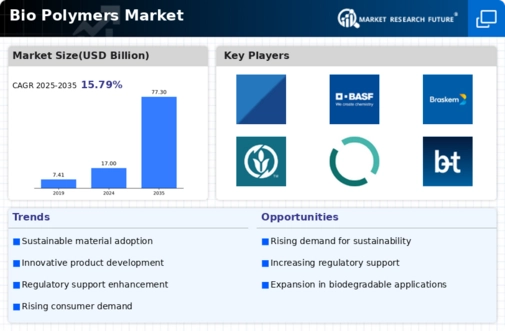Bio Polymers Market Summary
As per Market Research Future Analysis, the Global Bio Polymers Market was valued at USD 11.50 Billion in 2022 and is projected to grow from USD 14.71 Billion in 2023 to USD 37.16 Billion by 2030, with a CAGR of 15.79% during the forecast period. The market is driven by a shift towards biodegradable plastics, reducing reliance on conventional non-biodegradable options. The Asia Pacific region is the largest and fastest-growing market, fueled by increasing demand for sustainable materials and favorable government policies. Key applications include packaging, medical equipment, and automotive components, with biodegradable polyesters leading the market share in 2022.
Key Market Trends & Highlights
The Bio Polymers market is witnessing significant trends driven by consumer preferences and technological advancements.
- The market for bioplastics is expanding due to rising consumer awareness of sustainable alternatives to conventional plastics.
- Biodegradable plastics break down faster than traditional plastics, enhancing their appeal in waste management.
- The Bottles segment dominated the market, driven by demand in food, beverage, and pharmaceutical industries.
- Asia Pacific is the largest market, with major consumers including China, Japan, and India, supported by local production capacities.
Market Size & Forecast
| 2022 Market Size | USD 11.50 Billion |
| 2023 Market Size | USD 14.71 Billion |
| 2030 Market Size | USD 37.16 Billion |
| CAGR | 15.79% |
Major Players
Key companies include Novamont, BASF, Braskem, NatureWorks, Biome Bioplastics, Mitsubishi Chemical Holding Corporation, Biotec, Toray Industries, Plantic Technologies, TotalEngies, and Corbion.


 Source: Secondary Research, Primary Research, Market Research Future Database, and Analyst Review
Source: Secondary Research, Primary Research, Market Research Future Database, and Analyst Review





